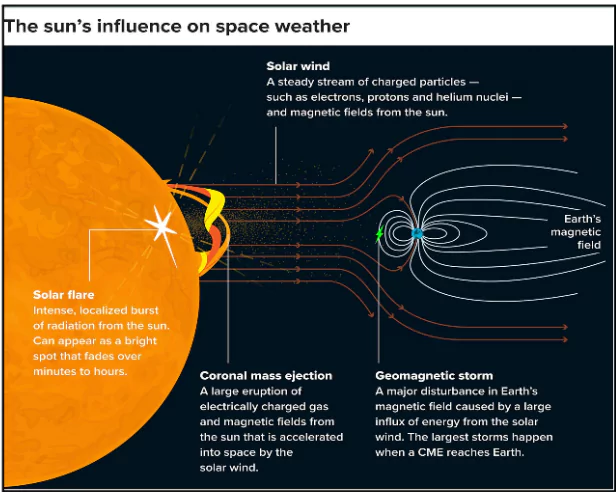The European Space Agency’s (ESA) Proba-3 mission has achieved a significant milestone as its twin spacecraft were successfully stacked in their launch configuration at the Satish Dhawan Space Centre (SHAR) in India.
PSLV-XL Rocket
- Polar Satellite Launch Vehicle (PSLV): A versatile launch vehicle developed by ISRO.
- PSLV-XL: An enhanced version of the PSLV, capable of launching heavier payloads into higher orbits.
- Launch Capacity: Can launch satellites weighing up to 1.7 tonnes into a Sun-synchronous orbit.
- Special Features:
- Utilizes solid and liquid propulsion stages.
- Highly reliable and has a proven track record of successful missions.
- Capable of launching multiple satellites simultaneously.
|
Enroll now for UPSC Online Classes
About Proba-3
- World’s First Precision Formation Flying Mission: Proba-3 is the world’s first mission to demonstrate advanced precision formation flying techniques.
- Launch of the Mission : The mission is led by the European Space Agency (ESA) scheduled for launch in December 2024, the mission will be carried into space by the Indian Space Research Organisation’s (ISRO) PSLV-XL rocket.
- Mission Aim: The primary aim is to showcase precise formation flying while enabling groundbreaking observations of the Sun’s corona.
- It aims to create an artificial eclipse by precisely coordinating the two satellites.
- Components: The Proba-3 mission comprises two small satellites Coronagraph Spacecraft and Occulter Spacecraft.
Coronagraph Spacecraft

- Purpose: To directly observe the Sun’s corona, the outermost layer of the Sun’s atmosphere.
- Function: Equipped with sophisticated instruments, this spacecraft will capture high-resolution images of the corona, allowing scientists to study its intricate structures, dynamics, and the processes that drive solar eruptions like coronal mass ejections (CMEs).
- Significance: By observing the corona in detail, the Coronagraph spacecraft will help scientists better understand the mechanisms behind space weather, which can have significant impacts on Earth’s technology and infrastructure.
Occulter Spacecraft
- Purpose: To create an artificial eclipse, blocking the Sun’s bright disk to enable detailed observations of the faint corona.
- Function: Positioned in precise formation with the Coronagraph spacecraft, the Occulter spacecraft will act as a solar shield, casting a shadow that allows the Coronagraph to capture clear images of the corona without interference from the Sun’s intense light.
- Significance: The Occulter spacecraft’s crucial role in enabling high-resolution observations of the corona will contribute to our understanding of solar physics and space weather forecasting.
Check Out UPSC NCERT Textbooks From PW Store
About Coronal Mass Ejections (CMEs)

- CMEs are massive releases of plasma and magnetic fields from the Sun’s corona into space.
- Causes: They are triggered by the sudden reconfiguration of the Sun’s magnetic fields, leading to an explosive release of energy.
- Frequency: CMEs occur more frequently during the peak of the Sun’s 11-year solar cycle.
- Characteristics: CMEs consist of billions of tons of charged particles (plasma) traveling at speeds ranging from hundreds to thousands of kilometers per second.
- Impact on Earth
-
- Satellite Disruption: CMEs can damage satellite electronics and affect GPS and communication systems.
- Geomagnetic Storms: They can cause geomagnetic storms that disrupt power grids and radio communications.
- Auroras: CMEs intensify auroras, resulting in spectacular light displays near the poles.
![]() 25 Nov 2024
25 Nov 2024


